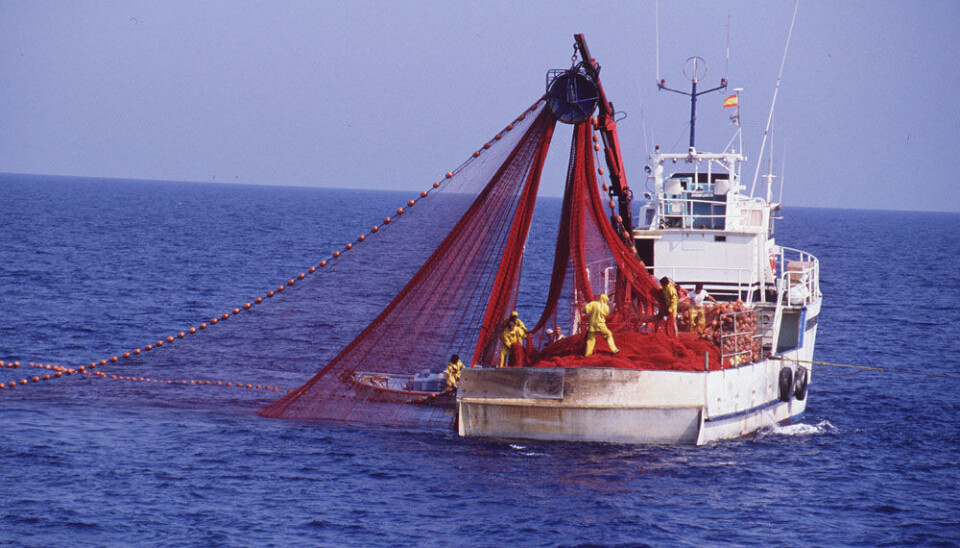This article was produced and financed by University of Stavanger

Differing dangers at sea
The probability of being killed at work is 25 times higher for a coastal fisherman than for an offshore worker. Seafarers also run a high risk of accidents.
Denne artikkelen er over ti år gammel og kan inneholde utdatert informasjon.
Fifteen people died on vessels registered in Norway during 2010, figures from the Norwegian Maritime Directorate show. Eight of these were fishermen.
Although the statistics show that the number of work accidents went down in 2009 and 2010, the total has remained at a high and stable level for many decades.
The number of accidents in maritime transport has increased since year 2000, with a growing number of vessels sinking, going aground or being involved in collisions.
“When fishing boats sink, the effect is usually felt by small coastal communities where high risk has been accepted for generations,” says Preben Lindøe, who is professor at University of Stavanger (UiS).
"Such individual accidents at sea fail to attract media attention or to generate any public debate on safety,” he says.
Lindøe questions why Norwegians accept such big losses in fishing and shipping, and he wonders why so many accidents on merchant ships are ignored or forgotten.
More than 90 bulk carriers of a certain type have been wrecked or sunk over a period of 15 years. During the same period more than 600 seafarers have died.
Outside attention gives better safety
Lindøe and fellow UiS professors Ole Andreas Engen and Odd Einar Olsen have recently published an article on responses to accidents in different industrial sectors.
Studying the progress made by safety efforts in offshore, fishing and shipping activities, their research has identified major differences.
There is a much greater likelihood of fishermen being killed compared with offshore workers over the past 15 years, according to Lindøe.
He finds a clear connection between the internal level of attention paid to safety and the level of external focus on safety issues in these three sectors.
“A concentration of public awareness on certain industries reveals some paradoxical aspects of our perception and handling of safety in society,” says Lindøe.
Wake-up calls in the oil sector
This view is backed by professor Engen: “It’s easier to adopt regulations under pressure from government and unions, for instance, in industries where risk and dangers are visible and attract great public concern. The oil sector is a case in point.”
The figures for injuries and accidents on Norwegian offshore facilities have declined sharply since the 1980s.
“Several major accidents, such as the Ekofisk Bravo blowout in 1977 and the Alexander L Kielland disaster in 1980, were wake-up calls to oil companies, government, and the general public. The gas leak on Snorre A in 2004 served as a further reminder,” explains Engen.
The number of injuries on Norway’s offshore facilities has declined by almost 80 per cent in the last the 30 years, from about 50 injuries per million working hours in 1976 to 10 injuries in 2006.
Oil more valuable than fish
Many factors explain why safety in the oil sector has attracted so much attention from the industry, government and the public.
The Norwegian economy is totally dependent on the oil business. Petroleum has 14 times the export value of fish.
Also the Norwegian government has declared that this industry will be a world leader in safety. And newspapers write about oil because it has great public interest.
The lack of such external interest makes safety work much more arduous for fishermen and in maritime transport. Smaller margins also make it more difficult to invest in better equipment, newer vessels or improved training.
Lindøe and Engen also believe that under-reporting of accidents and near misses is a major problem.
Conflicts of interest
How the sectors are organised also differ, according to Engen.
Fishing vessel owners and crews have traditionally been members of the same union, so fewer conflicts of interest between safety and cost emerge.
“Safety representatives are seldom to be found, and many vessels belong to family-owned companies where safety is a taboo subject,” says Engen.
“Fishermen, like farmers, are concerned about their occupational freedom. Imposed safety measures would meet resistance and have little effect. So desire for improvement must come from the fishermen themselves,” concludes Engen.
-------------------------------------------------
Read the article in Norwegian at forskning.no
Translated by: Rolf E Gooderham






























